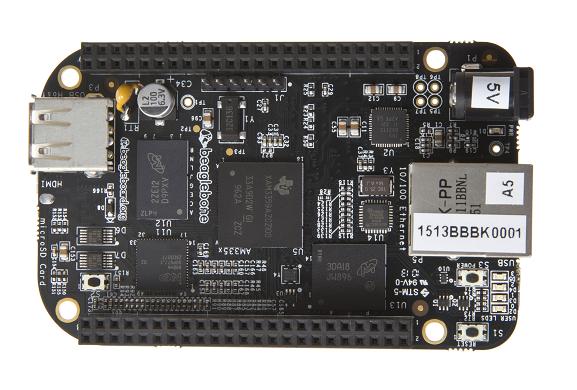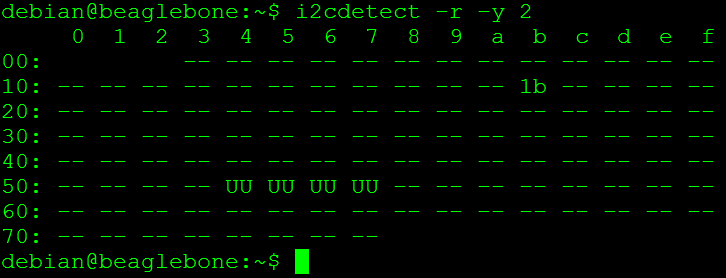DLPU049C July 2017 – October 2017 DLP2000 , DLPA1000 , DLPC2607
2.1 Use With Host Processor
In the case where the system will be controlled via a host processor, the selected host must possess the necessary GPIO pinouts to drive the inputs to the EVM. This can be accomplished using a customized video and I2C output driver. In the case of the BeagleBone Black, a software driver for use with the DLP LightCrafter Display 2000 EVM has been provided such that the pinouts of the BeagleBone Black match the footprint of the EVM I/O ports. This driver also works with the BeagleBone Green. This guide will assume the user is interfacing with a BeagleBone Black as an example.
To begin, an appropriate operating system image must be installed onto the board. The latest Debian image designed for the BeagleBone should be installed to access the most up-to-date EVM drivers designed for the BeagleBone Black. For help with this step, consult the getting started page located at http://beagleboard.org/getting-started. TI recommends using Debian Jessie (version 8.9) to ensure there are no compatibility issues with the EVM.
 Figure 6. BeagleBone Black Host Processor
Figure 6. BeagleBone Black Host Processor After installing the BeagleBone-compatible Debian image, an interface between the host processor and the user must be established. There are two ways of going about this:
- Onboard mini-HDMI video output with USB keyboard and mouse connection
- Remote connection via SSH terminal application (such as PuTTY for Windows users)
Using a remote SSH connection is recommended for its flexibility and ease of use. Before continuing, download PuTTY (or refer to your preferred SSH terminal application) from the creator's website located at http://www.putty.org/. Included on the website are documentation links to provide more detailed information on how to use PuTTY. (1)
Once the system is set up properly, the BeagleBone Black will communicate with the EEPROM on the DLP LightCrafter Display 2000 EVM on boot-up. This will tell the BeagleBone Black to load the appropriate daughter card (or cape) overlay to configure the GPIO ports on the host processor. Once the cape overlay is loaded, the host processor can interface with the EVM through:
- Parallel I/F video data (via RGB888)
- Issuing I2C commands (via I2C commands)
- Enabling/disabling the EVM (via PROJ_ON_EXT)
Support for use of these features with the DLP LightCrafter Display 2000 EVM is included in the BeagleBone Black support scripts, which can be found in the "opt/scripts" directory and executed from the terminal command line. More information on this can be found in the "Example Application" section (Section 4). To access the BeagleBone Black terminal, please follow the networking access guide at http://elinux.org/Beagleboard:Terminal_Shells.
I2C commands can be issued by using the aforementioned shell scripts but can also be issued manually using the I2C terminal commands "i2cdetect", "i2cget", "i2cset". These commands use the onboard I2C bus to communicate with peripheral devices attached to the host processor. Use of these commands is documented at http://elinux.org/Interfacing_with_I2C_Devices. For further information, the "man" command in Linux can also be used to access internal manuals for "i2cdetect", "i2cget", and "i2cset". Please refer to Figure 7 and Figure 8 for example usages of these commands within a Linux ssh terminal interfacing with the BeagleBone Black. Typically, the DLPC2607 is located at address 0x1b and the EEPROM is located at address 0x54, 0x55, 0x56, or 0x57 depending on the configuration of jumpers J4 (Bit 1 of address) and J5 (Bit 0 of address) on the EVM. By default, the EEPROM device address is 0x54.
 Figure 7. "i2cdetect" Example Use (In Bash)
Figure 7. "i2cdetect" Example Use (In Bash)  Figure 8. "i2cset" Example Use (In Bash)
Figure 8. "i2cset" Example Use (In Bash)